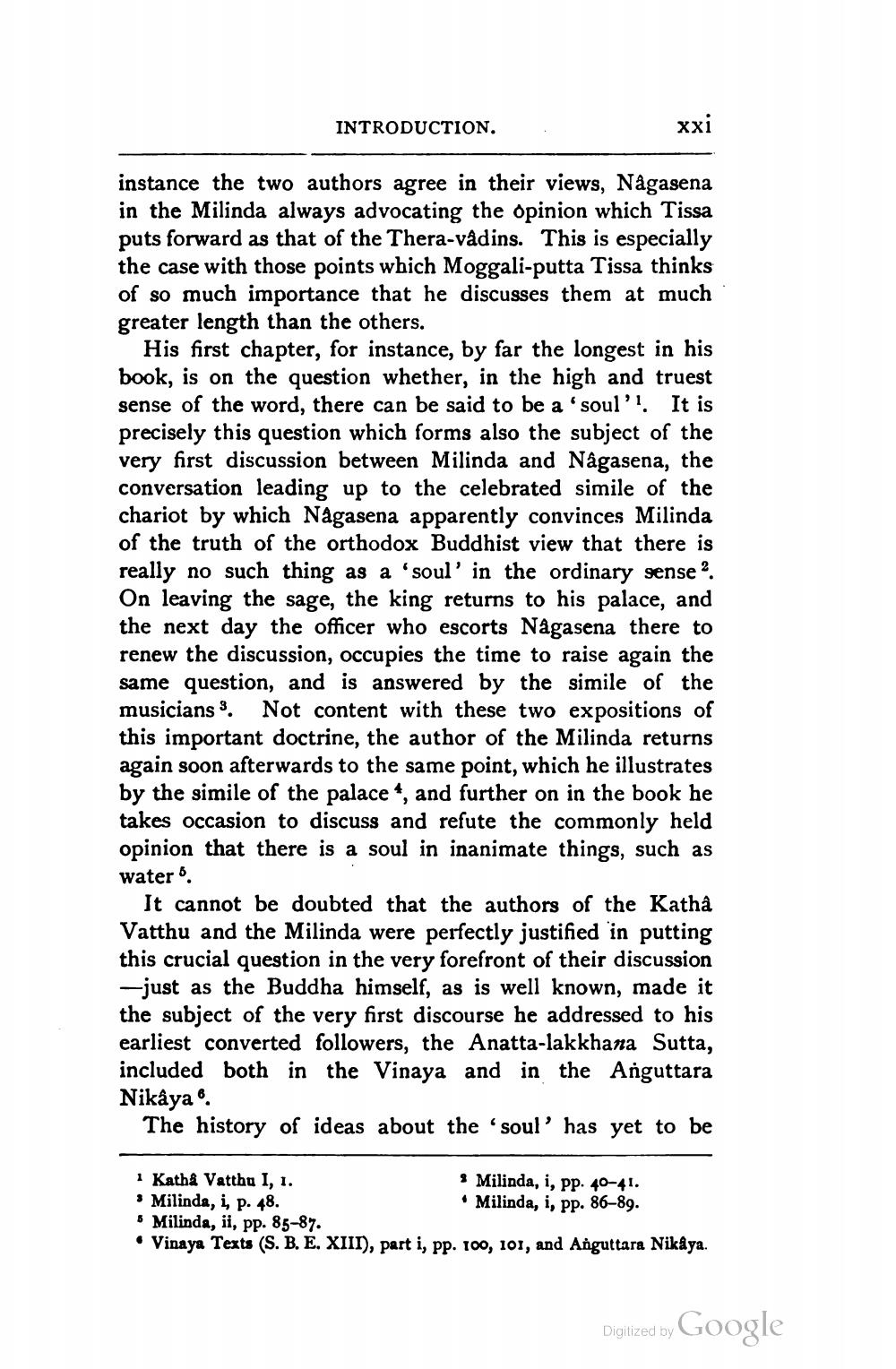________________
INTRODUCTION.
xxi
instance the two authors agree in their views, Någasena in the Milinda always advocating the opinion which Tissa puts forward as that of the Thera-vâdins. This is especially the case with those points which Moggali-putta Tissa thinks of so much importance that he discusses them at much greater length than the others.
His first chapter, for instance, by far the longest in his book, is on the question whether, in the high and truest sense of the word, there can be said to be a 'soul'l. It is precisely this question which forms also the subject of the very first discussion between Milinda and Nagasena, the conversation leading up to the celebrated simile of the chariot by which Nagasena apparently convinces Milinda of the truth of the orthodox Buddhist view that there is really no such thing as a 'soul' in the ordinary sense ? On leaving the sage, the king returns to his palace, and the next day the officer who escorts Någasena there to renew the discussion, occupies the time to raise again the same question, and is answered by the simile of the musicians 3. Not content with these two expositions of this important doctrine, the author of the Milinda returns again soon afterwards to the same point, which he illustrates by the simile of the palace 4, and further on in the book he takes occasion to discuss and refute the commonly held opinion that there is a soul in inanimate things, such as water
It cannot be doubted that the authors of the Katha Vatthu and the Milinda were perfectly justified in putting this crucial question in the very forefront of their discussion - just as the Buddha himself, as is well known, made it the subject of the very first discourse he addressed to his earliest converted followers, the Anatta-lakkhana Sutta, included both in the Vinaya and in the Anguttara Nikaya
The history of ideas about the soul' has yet to be
i Katha Vatthu 1, 1.
Milinda, i, pp. 40-41. * Milinda, i, p. 48.
• Milinda, i, pp. 86–89. 5 Milinda, ii, pp. 85-87. • Vinaya Texts (S. B. E. XIII), part i, pp. 100, 101, and Anguttara Nikâya.
Digitized by Google




